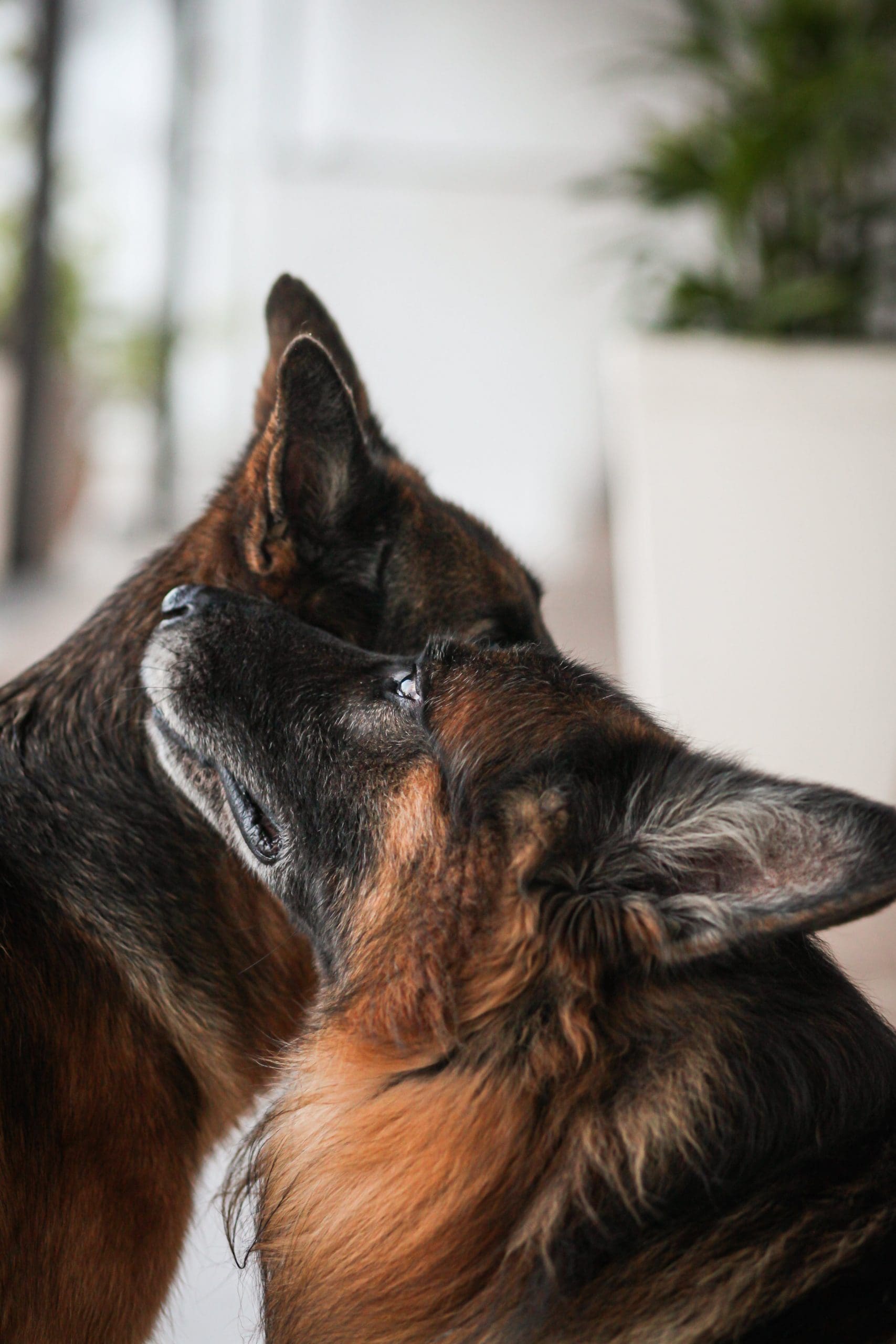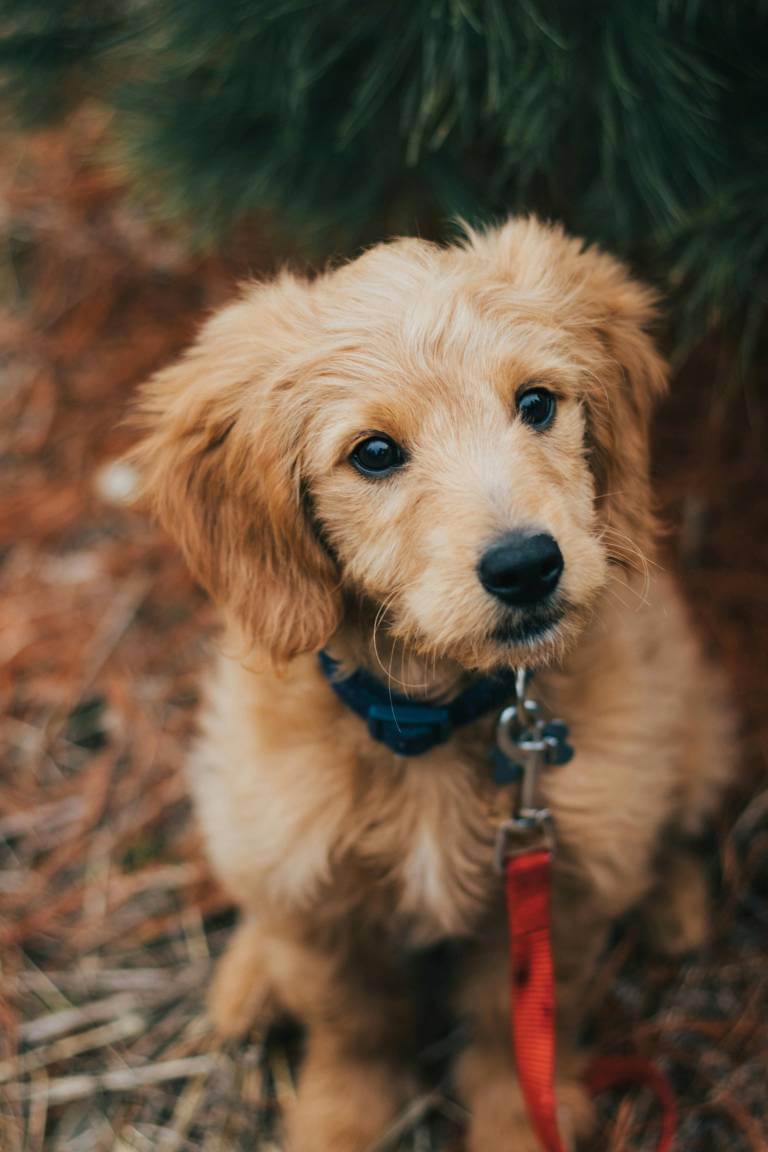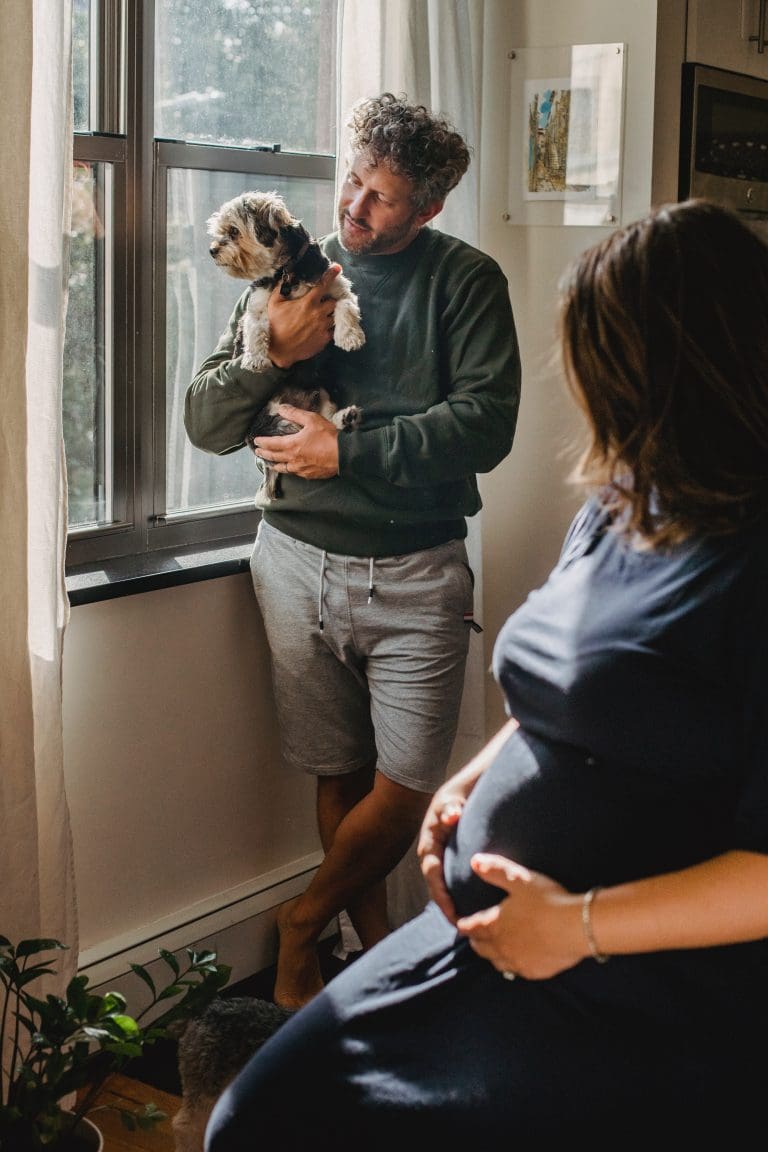What Do Dog Fleas Look Like To The Human Eye?
Post Date:
December 10, 2024
(Date Last Modified: November 13, 2025)
Many dog owners notice tiny animals or black specks on pets and wonder what they are and how to recognize them. Visual identification relies on size, shape, color, motion, and indirect signs that are visible without magnification.
Adult flea appearance to the naked eye
Adult dog fleas are very small, typically about 1/16 to 1/8 inch long (1–3 mm) and noticeably flattened from side to side, which helps them move through fur[1].
To the eye they look narrow and elongated rather than round, with a glossy brown to reddish-brown sheen that can appear darker when dry and slightly reddish after feeding[1]. Adults are wingless and have a distinct head and thorax, visible antennae segments, and very long, powerful hind legs that are often seen as a larger rear profile when the flea moves on the coat[1].
Visible flea life stages
Not every flea life stage is obvious without close inspection. Eggs are tiny, smooth, and white; they are roughly 0.02 inches long (about 0.5 mm) and often roll free from the coat into bedding and carpets[2].
Larvae are worm‑like and generally translucent to pale cream; they can grow to about 0.08–0.2 inches long (2–5 mm) and will be found in the environment rather than clinging to the dog[2]. Pupae are enclosed in sticky, often dust‑covered cocoons and are roughly the same scale as adults when compacted; pupae are less likely to be seen unless you disturb bedding where they hide[2].
| Stage | Typical size | Color/appearance | Where commonly found |
|---|---|---|---|
| Adult | ~1/16–1/8 in (1–3 mm)[1] | Glossy brown to reddish-brown | On the animal, briefly; often jump away into bedding |
| Egg | ~0.02 in (0.5 mm)[2] | Small, white, smooth | Coat, bedding, carpet fibers |
| Larva | ~0.08–0.2 in (2–5 mm)[2] | Worm‑like, pale, fuzzy appearance | Carpet, cracks, bedding |
| Pupa | Similar to adult when compacted (a few mm)[2] | Cocooned, often camouflaged with debris | Deep in fibers, under furniture, in cracks |
Where fleas are seen on dogs and in homes
On dogs, fleas are easiest to spot in areas with short fur or where the pet cannot easily groom, because fleas congregate where skin is thin and blood access is easiest. Typical locations to part the fur and inspect include the back of the neck, the base of the tail, the groin and inner hind legs, and the underarms.
- Common household hotspots include pet bedding, area rugs and carpets, upholstered furniture, and floor cracks or baseboards.
Outdoors, fleas favor shaded, humid microhabitats such as shaded grass edges, kennels or runs, and leaf litter where eggs and immature stages can develop in the detritus.
Signs you can see when fleas are present (without seeing the insect)
Flea “dirt” is often the clearest indirect sign: it looks like coarse, dark pepper-like specks that may cluster on the skin or on a light towel when combed through the coat. A simple test for flea dirt is to place the specks on damp white paper; true flea feces will dissolve to a reddish-brown stain as the digested blood re‑moistens[4].
Visible skin signs include local redness, small areas of hair loss or broken hairs, crusts or scabs, and clusters of small punctate bites; severe flea allergy dermatitis can create widespread patches of inflammation and secondary scabbing visible across the body[4].
Behavioral signs also show: intense scratching, persistent grooming in a specific area, rolling, or restlessness can be apparent from a distance and suggest the presence of biting fleas even when you do not see the insects.
Flea movement and behavior visible to the eye
One of the most diagnostic behaviors is the flea’s jump: fleas can clear vertical distances on the order of 6–7 inches (15–18 cm) and leap horizontally multiple inches, which is many times their body length and is noticeable as sudden, rapid hops when you part the fur or comb the coat[3].
When moving on fur, fleas often make quick lateral dashes and will dive toward the skin or into densely packed fur; on fabric they may make shorter, brisk hops and tend to hide in seams or fibers.
How to distinguish fleas from similar things (ticks, lice, debris)
Ticks are generally slower and bulkier than fleas; unfed ticks can measure several millimeters up to about 0.4 inches (1 cm) or more, and they do not jump—ticks remain attached and are rounder or teardrop shaped when engorged, while fleas are narrow and mobile[4].
Lice are usually more elongated and move by crawling rather than jumping; lice and carpet beetle larvae also display different segmentation and slower movement compared with fleas, and their size and behavior help separate them visually.
Flea dirt differs from ordinary dust or dandruff because it is granular and, when moistened, will leach a reddish color from dried blood; ordinary dirt or dandruff will generally not produce that reddish stain when moistened[4].
Tools and inspection techniques to make fleas visible
A fine-tooth flea comb used over a light-colored towel or sheet is one of the simplest ways to make fleas visible; combing the pet for about 60 seconds in each region concentrates any loose adults or flea dirt onto the towel where they are easy to spot, and the comb teeth spacing of roughly 1 mm helps trap the insect bodies[5].
Work in bright, direct light and part the fur systematically in strips, checking and combing each area from head to tail. If you find dark specks on a white towel, moisten them to test for flea dirt as described above. For closer inspection, a handheld magnifier or a smartphone with a macro clip lens will allow you to resolve body shape and leg position more clearly.
Photographing fleas for identification
To photograph fleas on a pet or on fabric, use strong, even lighting and a short shutter speed to freeze motion; smartphone cameras in natural daylight with a macro attachment or a lens set to close focus (roughly 1–2 inches from the subject) produce the clearest images. If your camera allows manual control, aim for a shutter speed of at least 1/250 second to reduce blur from sudden jumps or movement[5].
Include a small object of known size (such as a ruler or a quarter) in the frame so the viewer can assess scale, and take multiple angles: a profile shot showing the lateral flattening and legs, a dorsal shot showing color and sheen, and a close-up of any dark specks for the flea-dirt test. Common pitfalls are blur from movement, lack of a size reference that causes scale misperception, and overexposure that washes out the subtle reddish-brown tones of an adult.
When identification is uncertain or infestation is heavy
Escalate to your veterinarian or a pest professional if you observe many live fleas on the animal at once or if your pet has widespread skin inflammation, hair loss, or secondary skin infection; finding dozens of fleas or very heavy amounts of flea dirt often indicates a household infestation requiring treatment beyond a single topical application[1].
If asked to submit a specimen, collect several intact adults or several specks of suspected flea dirt in a sealed container or zip bag; refrigerate if transportation to a clinic will be delayed. Provide the professional with photos (including a scale reference), a short history of where the pet spends time, any recent flea prevention used, and where you found the specimens to aid accurate identification and control planning.
Sources
- merckvetmanual.com — veterinary clinical descriptions and life stage information.
- vcahealthcare.com — pet hospital client resources on flea biology and stages.
- cdc.gov — public health and vector behavior summaries.
- avma.org — veterinary guidance on signs, testing, and differential diagnosis.
- ipm.ucanr.edu — inspection, combing technique, and photographic tips.






